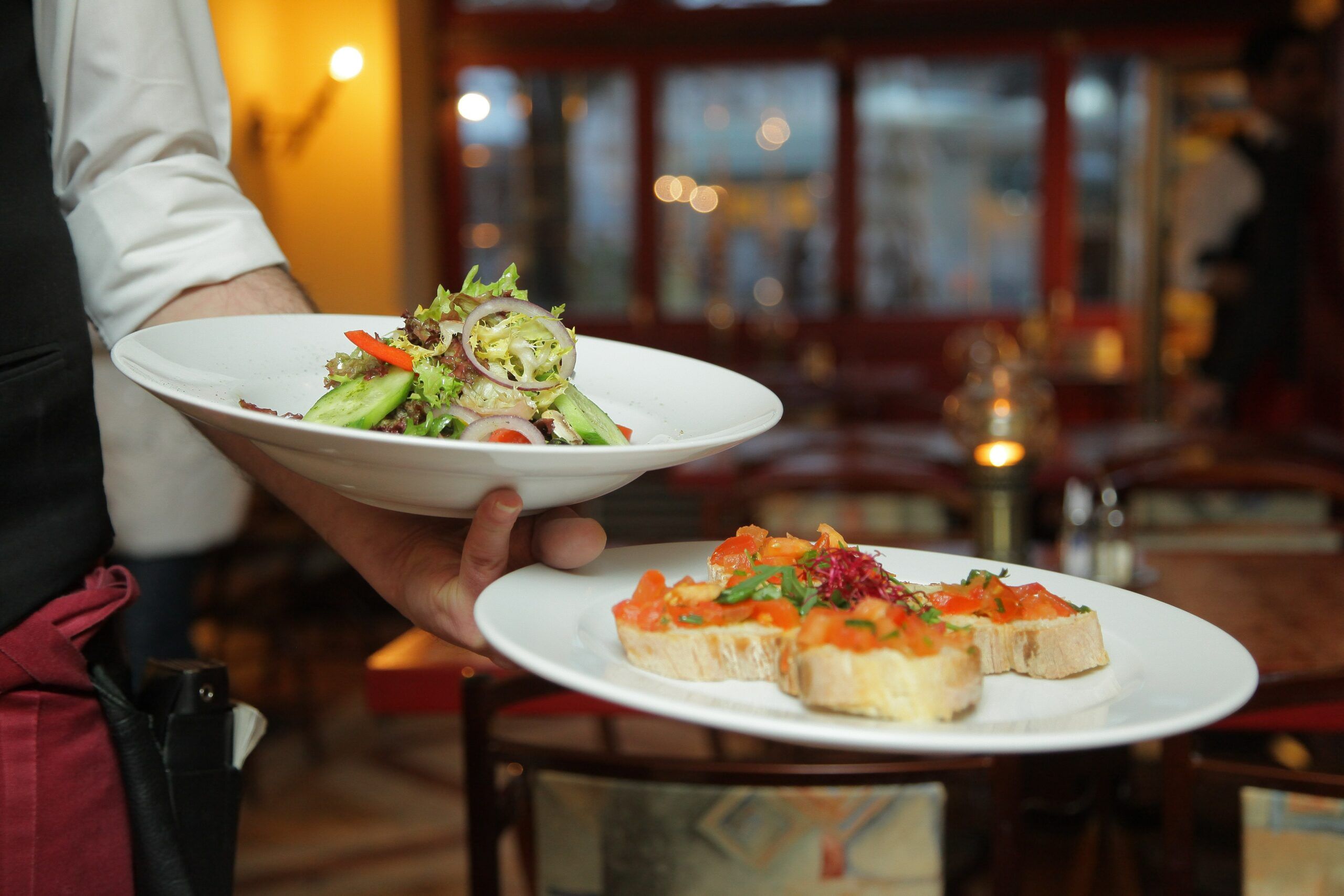Imagine yourself sitting in a bustling restaurant, savoring a delectable dish that has been prepared to perfection. The ambiance is warm, the service is impeccable, and every aspect of your dining experience seems seamless.
Behind the scenes, a well-oiled machine is at work, orchestrating the symphony of flavors, customer satisfaction, and efficient operations. This symphony is conducted by none other than a skilled restaurant manager.
Restaurant management is a delicate art that requires a blend of culinary expertise, business acumen, and interpersonal finesse.
From ensuring the quality of food to providing exceptional service, a restaurant manager plays a crucial role in the success of any eatery.
In this essential guide, we will delve into the world of restaurant management, uncovering
valuable tips, tricks, and best practices that can elevate your skills and take your restaurant to new heights.
Best Practices for Restaurant Management in 2023
It’s finally 2023, a.k.a. The year of new possibilities and expanding your horizons.
The prevalence of AI and its tools has grabbed the attention of all active internet users, especially with the advent of tools like ChatGPT.
When it comes to the restaurant industry, there are now apps that help restaurants get rid of their food instead of throwing them away simply by having customers order from an app for cheap.
Why contribute to food waste when you can fill someone’s empty belly instead?
Moreover, for restaurant managers, QR codes, online ordering, and delivery apps have assisted in automating mundane tasks like order taking and customer service.
Having a custom ordering website, for example, lets customers quickly order their food while choosing to watch something on Netflix.
In order to stay on top of the competition, restaurant managers need to stay up-to-date with the latest trends and technologies in the industry.
Here are some best practices that can drive success for your restaurant business this year:
Setting the Foundation: Planning and Organization
To ensure effective restaurant management, meticulous planning, and organization are key.
Before opening your establishment, develop a comprehensive business plan that covers all essential aspects. This plan should include defining your concept, identifying your target market, designing your menu, setting pricing strategies, and outlining your marketing approaches. A well-defined business plan serves as a roadmap for your restaurant’s success.
In addition to planning, establishing efficient systems for inventory management, staff scheduling, and financial tracking is crucial.
Implementing an inventory management system helps track ingredient usage, prevent overstocking, and minimize waste.
Effective staff scheduling ensures adequate coverage during peak hours while optimizing labor costs. Financial tracking systems help monitor expenses, revenues, and cash flow, enabling you to make informed decisions and maintain a healthy financial status.
Hiring and Training the Dream Team
Behind every successful restaurant is a dedicated and well-trained team.
As a restaurant manager, it is vital to recruit talented individuals who align with your vision and values. Conduct thorough interviews to assess candidates’ skills, experience, and cultural fit.
Check references to validate their qualifications and work ethic. Additionally, consider practical assessments or trial shifts to evaluate their ability to perform in a real-world restaurant environment.
Once you have assembled your team, invest time and resources in their training and development. Provide comprehensive onboarding programs that familiarize new employees with your restaurant’s standards, policies, and procedures.
Ongoing training sessions should focus on enhancing their skills, product knowledge, and customer service expertise. By empowering your staff with the necessary tools and knowledge, you create a cohesive team capable of delivering exceptional service.
Consistency is Key: Maintaining Quality Standards
Consistency is the cornerstone of any successful restaurant. From the taste and presentation of the food to the ambiance and service, customers expect a consistent experience every time they visit.
Regular menu tastings are essential to assess the quality and consistency of your dishes. This allows you to make adjustments, refine recipes, and ensure that each plate meets your standards.
Conduct kitchen inspections to verify food safety practices, cleanliness, and adherence to standard operating procedures. Customer feedback systems, such as comment cards or online reviews, provide valuable insights into their dining experiences and help identify areas for improvement.
The Power of Communication
Effective communication is vital for smooth operations and a harmonious work environment. Foster open lines of communication between the front-of-house and back-of-house teams to facilitate seamless coordination.
Regular team meetings allow you to address concerns, share updates, and encourage collaboration. Pre-shift briefings ensure that staff members are informed about specials, menu changes, and any relevant information for the day.
Moreover, providing opportunities for staff feedback is crucial. Encourage an open-door policy where employees feel comfortable sharing their ideas, suggestions, and concerns.
Embrace technology by utilizing communication tools and platforms that streamline operations, such as project management apps or instant messaging systems. These tools enhance communication efficiency and keep everyone connected, even during fast-paced service hours.
Embracing Technology and Innovation
In today’s digital age, harnessing the power of technology is crucial for restaurant management. Adopting robust restaurant management software can streamline tasks such as table reservations, order taking, inventory management, and reporting.
Explore innovative solutions like mobile payment options, integrating your POS with online ordering platforms for your POS, and loyalty programs to enhance customer convenience and engagement.
Online ordering platforms allow customers to place orders for takeout or delivery, expanding your reach beyond the traditional dine-in model. And loyalty programs encourage repeat business and customer retention by rewarding frequent patrons.
Providing Stellar Customer Service
Exceptional customer service is the secret ingredient that keeps patrons coming back for more. Train your staff to anticipate and exceed customer expectations, encourage personalized interactions, and handle complaints with empathy and efficiency.
Regularly gather customer feedback through surveys, social media, or direct interactions to understand their preferences and continuously improve the dining experience.
Your Inbox, Your Rules!
Tailor your newsletter with the topics you're most interested in.
Financial Management and Profitability
Maintaining a healthy bottom line is crucial for the long-term success of your restaurant. Implement sound financial management practices such as budgeting, cost control, and menu engineering to maximize profitability.
Regularly analyze financial reports, track key performance indicators, and adapt your strategies accordingly.
Keep the following points in mind:
Monitor the cost-to-sales ratio to assess pricing strategies and avoid overspending.
Analyze menu items to identify low performers and maximize profits through menu engineering.
Optimize labor costs by ensuring adequate coverage during peak hours and minimizing overtime pay.
Utilize analytics tools and gain insights into customer behavior and evaluate marketing campaigns.
Embracing Sustainability and Social Responsibility
In an era of increasing environmental consciousness, incorporating sustainability and social responsibility practices into your restaurant management can have a significant impact.
Consider the following:
Implement Sustainable Practices: Reduce food waste by implementing portion control measures, using food tracking systems, and repurposing leftovers. Additionally, encourage recycling and composting, and opt for eco-friendly packaging and utensils to minimize your environmental footprint.
Source Locally and Seasonally: Supporting local farmers and suppliers not only reduces carbon emissions associated with transportation but also ensures fresh and high-quality ingredients for your menu. Emphasize seasonal dishes that celebrate local flavors and reduce the need for long-distance transportation.
Energy-efficient Operations: Evaluate and optimize energy consumption in your restaurant. Replace traditional light bulbs with energy-efficient alternatives, invest in energy-saving kitchen equipment, and educate staff about the importance of conserving energy by turning off lights and appliances when not in use.
Water Conservation: Implement water-saving measures such as low-flow faucets, water-efficient dishwashers, and regular maintenance to fix leaks promptly. Train staff on the importance of water conservation and encourage responsible usage in daily operations.
Community Involvement: Engage with your local community by participating in events and supporting local charities. Partner with nonprofit organizations to donate excess food and collaborate on initiatives that benefit the community. This involvement not only fosters goodwill but also enhances your restaurant’s reputation as a socially responsible business.
Educate Staff and Customers: Train your staff on sustainability practices and encourage their active participation in implementing green initiatives. Educate customers about your sustainability efforts through menu descriptions, table cards, or social media campaigns. Engage them in conversations about sustainability and inspire them to make conscious choices while dining out.
Important Tips and Tricks for Managing Your Restaurant from Orders
Having all these best practices in arm’s reach is highly beneficial.
Every restaurant manager strives to implement whatever is most trendy and what the professionals are saying. Of course, adopting these above-mentioned practices is crucial.
However, some additional tricks can help you move further along the race. And here’s ours:
Find Your Voice in the Sea of Brands
Don’t pretend you’re into sustainability or veganism if your whole menu consists of meat and dairy. You can still maintain a unique brand voice without lying to your customers.
There are a lot of people who still consume meat and animal products and still want to be responsible for their choices. Show them you’re the right place for that kind of thing.
For instance, if your portions are big, make them smaller and add more vegetables or pulses to the menu to find a balance.
Experiment with Menus
Diets and food preparation styles are changing, and people are more open to experimentation.
Even if it involves trying some fruit peels for the sake of reducing food waste. ( take caution, though, and ensure to work with suppliers who are certified to supply edible fruit peels)
So introduce experimental dishes but don’t forget the classic, signature dishes that made you popular in the first place. Customers will appreciate the variety and your efforts to bring something unique every time they visit.
These experiments can also help you identify what works and what doesn’t. You can leverage the data from these experiments to make more informed decisions about menu items, pricing, marketing strategies, etc.
Don’t Just Prioritize a Young Customer Base
According to recent stats, the world population now includes more old people than ever before. Therefore, it is important to consider a wider customer base when planning your menu items and the way you present your menu.
Sure, delivery apps work great for the millennials, but what about older generations? Many seniors are not tech-savvy and prefer to dine out.
If you want to reach out to these customers, consider adding a simple menu item that appeals to them. You can also provide special discounts and promotions targeting older adults. Having a few paper menus in the restaurant can also be helpful.
Embracing Best Practices and Innovations
You can successfully manage your restaurant by embracing the best practices and innovations listed above. Regularly review and update these practices as necessary to stay ahead of the curve and ensure success.
Keep in mind that being a restaurant owner is an ever-evolving journey. Remain open to new ideas, technologies, and trends; don’t be afraid to think outside the box. You can build a successful restaurant business with hard work, dedication, and strong leadership skills that deliver exceptional customer experiences.



